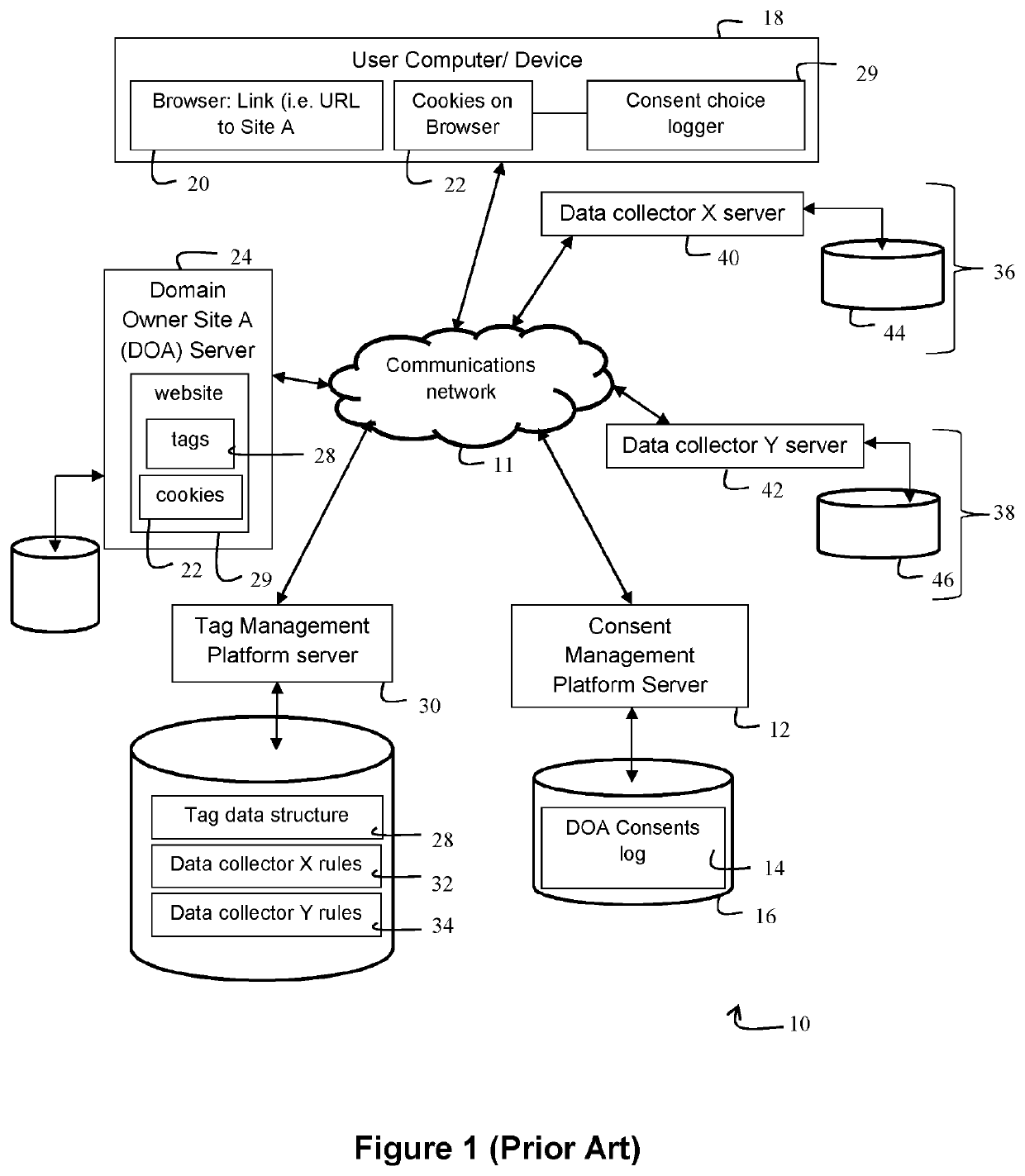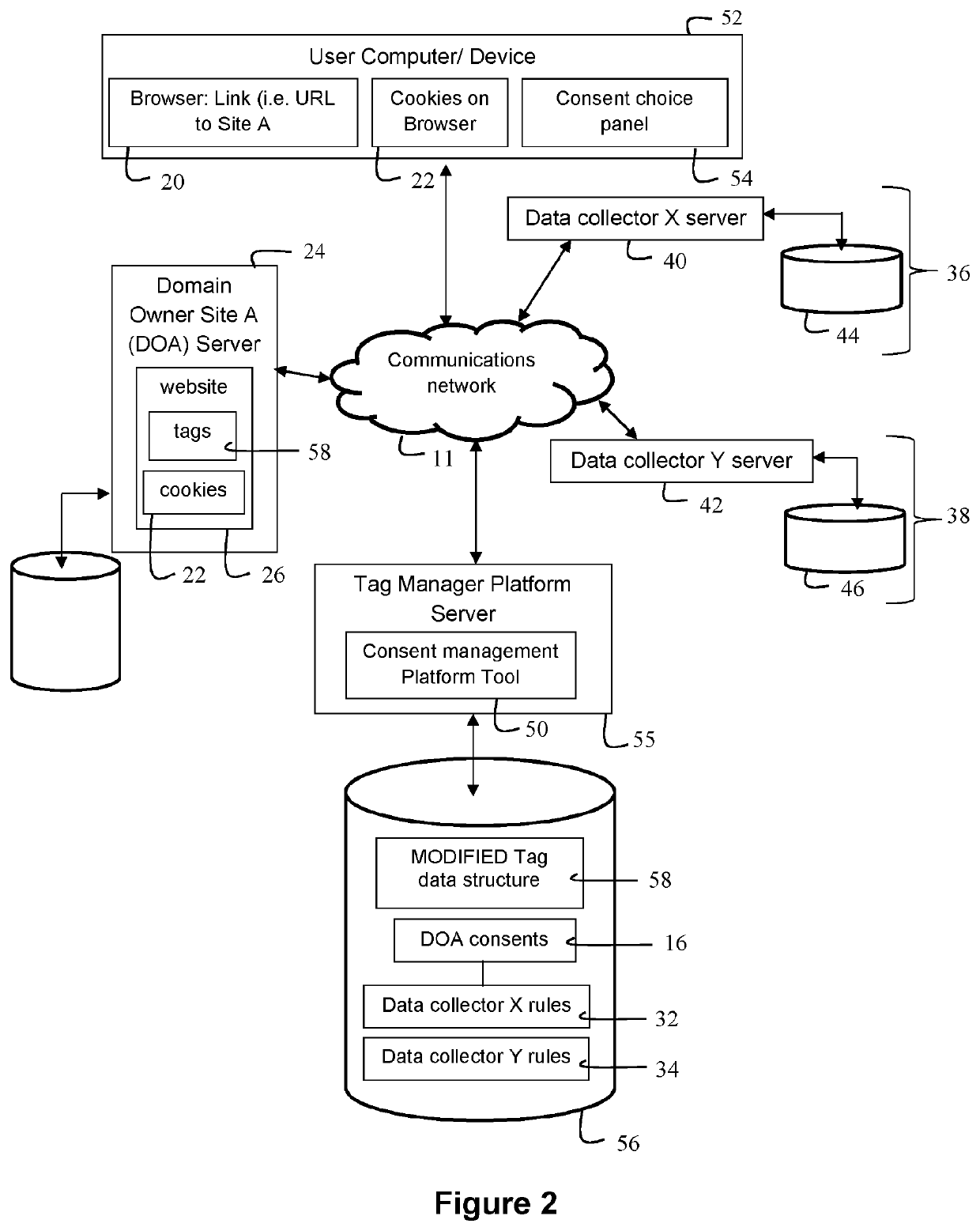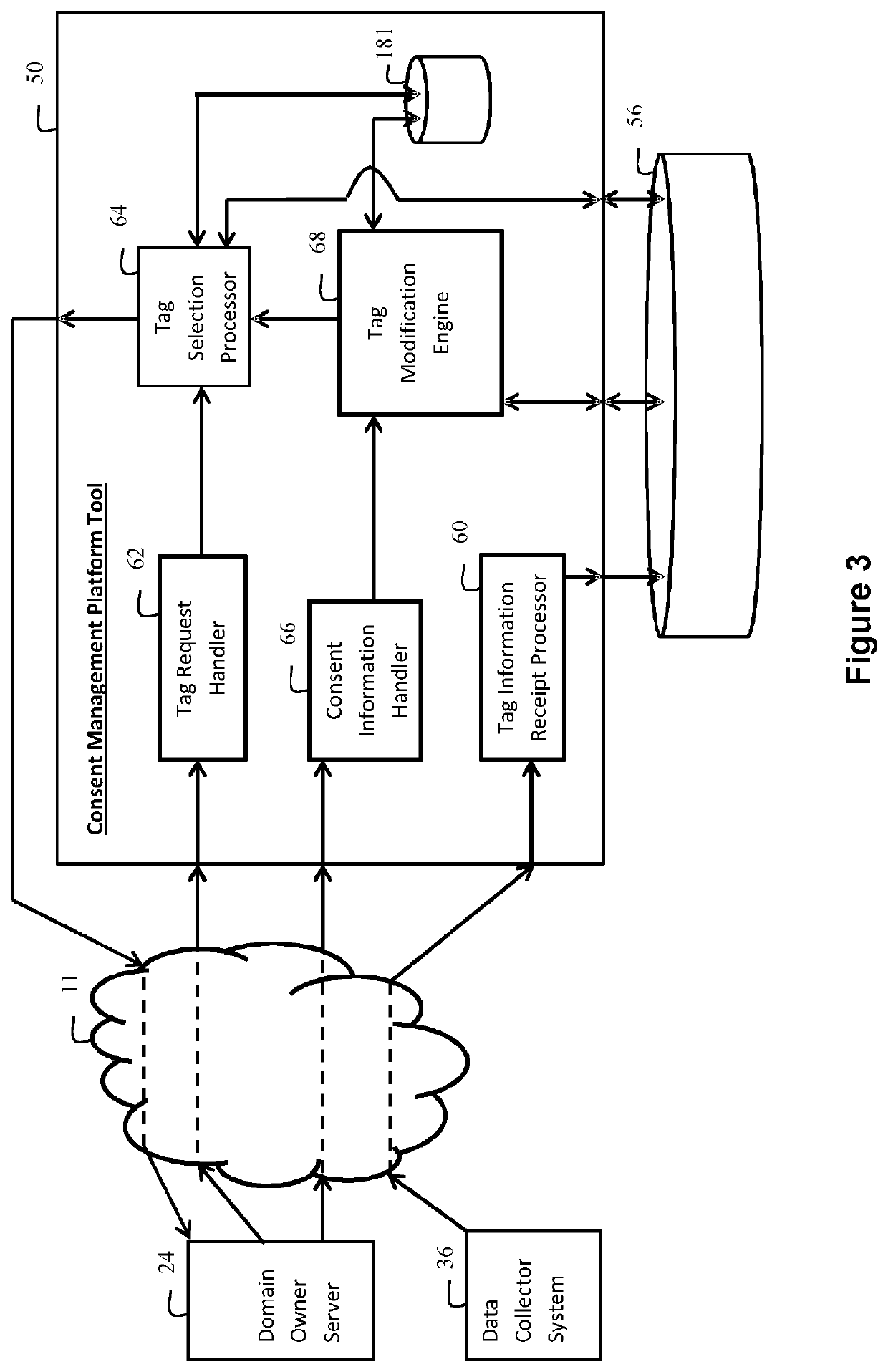On-line browsing preference management
a preference management and on-line technology, applied in the field of system control of user interaction, can solve the problems of inability to guarantee the delivery of two separate systems, excessive size of the matrix for data collection, and additional processing load, so as to reduce the number of available tags, prevent unnecessary transmission of personal data, and increase the processing efficiency of the selection step
- Summary
- Abstract
- Description
- Claims
- Application Information
AI Technical Summary
Benefits of technology
Problems solved by technology
Method used
Image
Examples
Embodiment Construction
[0054]Specific embodiments are now described with reference to the appended figures.
[0055]Turning firstly to FIG. 2, there is shown a use scenario for a consent management platform tool 50 according to a first embodiment of the present invention, which manages tags that are to be deployed on a website and the consents associated with these tags. The tags which the consent management platform tool 50 manages have a modified data structure when compared to the tags described with reference to FIG. 1. The modification to the data structure enables each individual tag to be associated with particular user consent for both the data collector 36, 38 that the tag relates to and the purpose for which the collected data is used. This consent association allows the consent management platform tool 50 to only deliver tags to be embedded in a website for which a user has given permission to be used. This is in contrast to the prior art which requires that all available tags are delivered and em...
PUM
 Login to View More
Login to View More Abstract
Description
Claims
Application Information
 Login to View More
Login to View More - R&D
- Intellectual Property
- Life Sciences
- Materials
- Tech Scout
- Unparalleled Data Quality
- Higher Quality Content
- 60% Fewer Hallucinations
Browse by: Latest US Patents, China's latest patents, Technical Efficacy Thesaurus, Application Domain, Technology Topic, Popular Technical Reports.
© 2025 PatSnap. All rights reserved.Legal|Privacy policy|Modern Slavery Act Transparency Statement|Sitemap|About US| Contact US: help@patsnap.com



